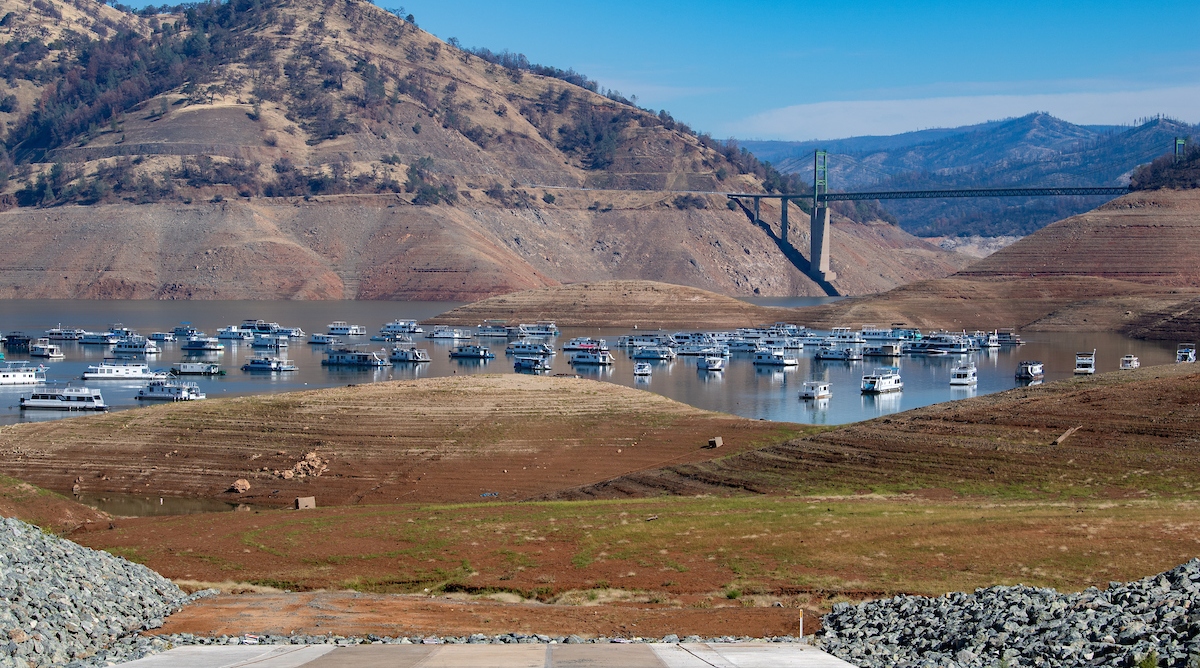The 2021-22 Water Year has started off with a bang! Record precipitation totals during last week’s Atmospheric River (AR) storms were impressive and have significantly changed the early season hydrologic picture for much of California. One-day precipitation total at Blue Canyon in the American River watershed for example was 9.85 inches (current cumulative precipitation at 472% of average). Year-to-date totals elsewhere at CVP reservoirs are also well above average (e.g., 162% at Trinity, 350% at Shasta, 362% at New Melones, 221% at Huntington Lake).
Despite record precipitation levels, reservoir operators did not lose sight of the bigger picture and have maintained discipline in managing these historic one-day precipitation totals. Operations did not deviate substantively; the only differences being a temporary increased release from Oroville (over 3,100 cfs) and elevated releases from Goodwin on the Stanislaus River to over 1,000 cfs. Elsewhere, releases have maintained their end-of-year flow rates. Releases to the lower American River from Folsom Reservoir for example have maintained their D-893-esque minimums of close to 500 cfs throughout October. Operators remained cognizant of the need to reestablish carryover storage as quickly as possible.
Accordingly, Folsom releases averaged 420 cfs daily through the power penstocks. Daily river outlet releases, commencing on October 11th averaged about 200 cfs. For the month, Folsom Reservoir gained about 85,000 AF but over 62,000 AF of that was added in a single day, on October 24th, the peak of the AR. The reservoir continued to lose storage for the first 21 days of the month and only gained daily storage over these past 10-days, the period when the 7.44 inches fell at the reservoir with more upstream. Interestingly, evaporative losses at the reservoir were calculated at 4.35 inches for the month.
After a protracted drought, it is not only filling surface storage reservoirs that is important but also repriming the “critical zone” which includes all surface depression storage, wetlands/ponds, soil moisture, perched and deep groundwater. Eliminating this storage deficit helps to facilitate higher runoff later in the season. Last week’s storms and continuing cooler temperatures have helped accomplish that.
While water storage continued to fall over much of October, the AR storms temporarily halted this decline and provided some relief. As of today, north CVP reservoir storage stood at 2.858 million acre-feet (MAF). Compare this to what it was only a day before the AR storms when storage was at 2.671 MAF. So, system-wide, there was a net gain of about 187,000 AF.
Still, current storage remains at 53% of the 15-year average, although it was only 49% before last week’s storms. Bottom line, CVP reservoirs gained some active storage, but not nearly as much as we need. Trinity is at 670 TAF (or 53% of its 15-year average), Shasta is at 1,002 TAF (or 46%), Folsom is at 316 TAF (or 82%), New Melones is at 828 TAF (or 66%) and Millerton is at 301 TAF (or 126%).
Prepared by Robert Shibatani
Robert Shibatani, a physical hydrologist with over 35-years combined experience as an international expert witness on reservoir-operations, climate change hydrology, commercial flood damage litigation, and water supply development. He is Managing Partner for The SHIBATANI GROUP International, a division of The SHIBATANI GROUP Inc. and resides in Sacramento, California. robert@theshibatanigroup.com
FOR MORE INFORMATION
Reservoirs
- Daily Reservoir Summary
- Selected Reservoirs, Daily Graphs (interactive)
- CA Data Exchange Center: Reservoirs
- CVP Daily Water Supply Report
Precipitation
- Real-time Rainfall Maps
- Detailed Monthly Precipitation Summary for Water Year
- Center for Western Weather and Water Extremes (CW3E)
Snow
Full Natural Flow Data
Drought/Climate
Water Project Operations
- State Water Project Operations and Delta Status
- Central Valley Project Operations
- Lower Colorado River Operations
Delta conditions
- Bay-Delta Live (Real Time Delta Conditions)
- EcoAtlas (Delta Restoration Projects)
Specialty Portals
- My Water Quality (CA Water Quality Monitoring Council)
- Fish Surveys (Department of Fish and Wildlife)
- NASA GRACE Groundwater and Soil Moisture Conditions



